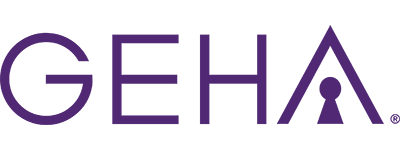How did methamphetamine get to be Arizona’s top drug threat?
Most methamphetamine is smuggled over the border from Mexico and into Arizona, where it’s then distributed to larger cities. It’s highly profitable compared to substances like heroin or cocaine, since it can be made in a laboratory. Meth is also appealing to people because it causes weight loss, helps with productivity, and makes them feel happy.
A recent analysis of data from the CDC between 2015 and 2019 found that the methamphetamine death rate increased by 103 percent in these five years. Despite growing efforts in preventing drug trafficking along the corridors from Sonora, Mexico to Arizona and an increase in arrests and seizures, meth is still making it across the border and into the hands of AZ residents.
Wolf Creek Recovery is located in Prescott, AZ, and because we are just outside of the Phoenix area, we are no stranger to methamphetamine. If you or a loved one is in need of support, we have it. Meth use disorders are treatable, and we are living proof of this, as our staff is in recovery. Let’s learn more about the signs of meth addiction and how to identify a potential problem in a loved one.
Signs of Meth Addiction
Would you be able to recognize meth addiction symptoms in someone? While you may have seen people with meth use disorder on TV or in movies, their condition probably worsened to the point where their meth use was noticeable. However, it can be challenging to know if someone is using this substance early on, especially because meth is a stimulant that makes people feel happy and energetic. Let’s look at the signs of a meth use disorder on the body and mind.
Symptoms of Meth Addiction on the Body and Mind
Psychological Signs of Meth Addiction
The psychological signs of methamphetamine addiction include:
- Increased energy and hyperactivity
- Intense feelings of pleasure (euphoria)
- Aggression, irritability, and even violent behavior
- High levels of anxiety and paranoia
- Visual or auditory hallucinations
- Cognitive impairments
- Extreme mood swings
- Sleep disturbances with prolonged periods of wakefulness
- Psychosis, with paranoia and delusions
Behavioral Signs of Meth Addiction
Meth use disorder can lead to various behavioral changes, such as:
- Increased physical activity and restlessness
- Drastic changes in appearance and hygiene
- Financial and legal problems
- Obsessive behaviors
- Social withdrawal and isolation
- Erratic and aggressive behavior
- Insomnia or erratic sleep patterns
- Paranoia and delusions
- Risky activities and impulsivity
Physical Signs of Methamphetamine Use
There are a number of physical health problems that can occur from meth use, including:
- Rapid weight loss
- Poor hygiene
- Burn marks
- Premature aging
- Dilated pupils
- Facial twitches and tics
- Dental problems, such as “meth mouth”
- Skin issues, such as sores, lesions, acne, and skin infections
- Hyperactivity and physical agitation
- Cardiovascular issues
- Respiratory problems
Short-Term Physical Symptoms of Methamphetamine Use
As a stimulant substance, meth produces a range of fast effects, sometimes within a matter of seconds depending on how it’s used. The most immediate effects include increased heart rate, elevated blood pressure, increased body temperature, dilated pupils, restlessness, and euphoria. The effects can last for a period of four to 12 hours. However, the comedown can be severe.
Long-Term Physical Symptoms of Methamphetamine Use
Using meth on a regular basis can lead to a wide range of physical symptoms and health issues. These effects occur because of the prolonged exposure to the toxic substances used to produce meth. One of the telling signs of long-term meth use is “meth mouth,” which refers to severe dental decay, rotting teeth, and missing teeth. Meth mouth is caused by a combination of poor oral hygiene, dry mouth, and the acidic nature of the substance.
Other long-term physical problems that can occur include skin sores and lesions, cardiovascular damage, respiratory problems, neurological and cognitive damage, and immune system suppression. Malnourishment is also common as meth suppresses the appetite, leading to rapid and dangerous weight loss.
Meth Withdrawal Signs
When you quit or reduce your meth intake, it can cause withdrawal symptoms to appear. They can start as soon as 24 hours from your last use, with the most severe symptoms lasting several days or a week. The signs of meth withdrawal include:
- Extreme fatigue and excessive sleeping
- Severe depression and suicidal thoughts
- Increased anxiety
- Strong urges to use meth
- Increased appetite
- Headaches and muscle pain
- Jitters and shaking
- Cognitive impairments
- Psychotic symptoms
Signs of Meth Use Disorder in a Loved One
If you are concerned about crystal meth use in a loved one, identifying meth use disorder sooner rather than later can significantly improve their outlook. Keep in mind that meth use disorder is a type of substance use disorder, which means the symptoms overlap. When someone is using substances, they often display similar symptoms, such as secretive behavior, neglecting responsibilities, and a change in friends.
Noticeable Changes in Physical Appearance
People who use meth often neglect their physical appearance. Meth suppresses the appetite, so it’s common for people to lose a lot of weight quickly and become malnourished. The ingredients used in meth are also acidic, which means the substance wears away at the teeth causing severe decay. People may also scratch excessively or pick at their skin, causing sores and lesions.
Changes in Mood and Behavior
Methamphetamine’s addictive nature causes changes in behavior relatively early on as the substances used to make meth are toxic to the body. Pay attention to bouts of increased energy and hyperactivity, followed by a “crash” period where the person sleeps for days. Social withdrawal is also common, as is secrecy about where they are going, what they are doing, and who they are spending time with. Aggression and irritability are also common, and in some cases, this behavior can turn violent.
Meth Paraphernalia
Meth paraphernalia refers to the equipment used to prepare, consume, and conceal meth. Recognizing these items can also help you identify a meth use disorder. Common forms of meth paraphernalia are:
- Smoking devices, such as glass pipes and aluminum foil
- Injecting equipment like needles, spoons, and tourniquets
- Snorting tools, including straws, rolled up bills, razor blades, and cards
- Containers and packaging to store meth, such as small plastic baggies and bindles
- Heating and cooking equipment like lighters, torches, burnt spoons, and metal caps
- Other miscellaneous items, including Q-tips, cotton balls, mirrors, and small plates
Treating Crystal Meth Addiction in Prescott, AZ
Treating meth addiction includes a combination of behavioral therapies, family education, individual counseling, 12-step support, and encouragement for healthy activities. While there are no medications that treat meth use disorder specifically, some medications have shown promise in managing symptoms, including antidepressants, antipsychotics, and replacement therapies. The important thing to know is that help is always there for you when you need it. All it takes is one step in the right direction, and you will be flooded with the support and encouragement you need to get healthy and live your life free of methamphetamines.
Wolf Creek Recovery is not just another treatment center. Our staff is in recovery and we are working right alongside our clients to achieve long-lasting healing. Aside from therapy and counseling, we spend a lot of time out in nature, finding the beauty in the world and our greater purpose in life. To learn more about joining our program and building a life you love, contact us today at 833-732-8202.
FAQs About the Signs of Meth Use Disorder
What is a meth use disorder?
Meth use disorder (MUD) refers to the compulsive urge to continue using meth despite harmful consequences. People who use meth can become dependent on it very quickly due to the substance’s ability to release large quantities of dopamine in the brain.
What are the psychological signs of meth use disorder?
The psychological signs of MUD include increased energy and hyperactivity, euphoria, mood swings, sleep disturbances, anxiety, paranoia, and hallucinations.
What are the behavioral signs of meth use disorder?
The behavioral signs of MUD include drastic changes in hygiene and appearance, financial and legal problems, social withdrawal and isolation, and erratic and aggressive behavior.
What are the physical signs of meth use disorder?
The physical signs of MUD include rapid weight loss, poor hygiene, burn marks, premature aging, dilated pupils, and dental problems.











